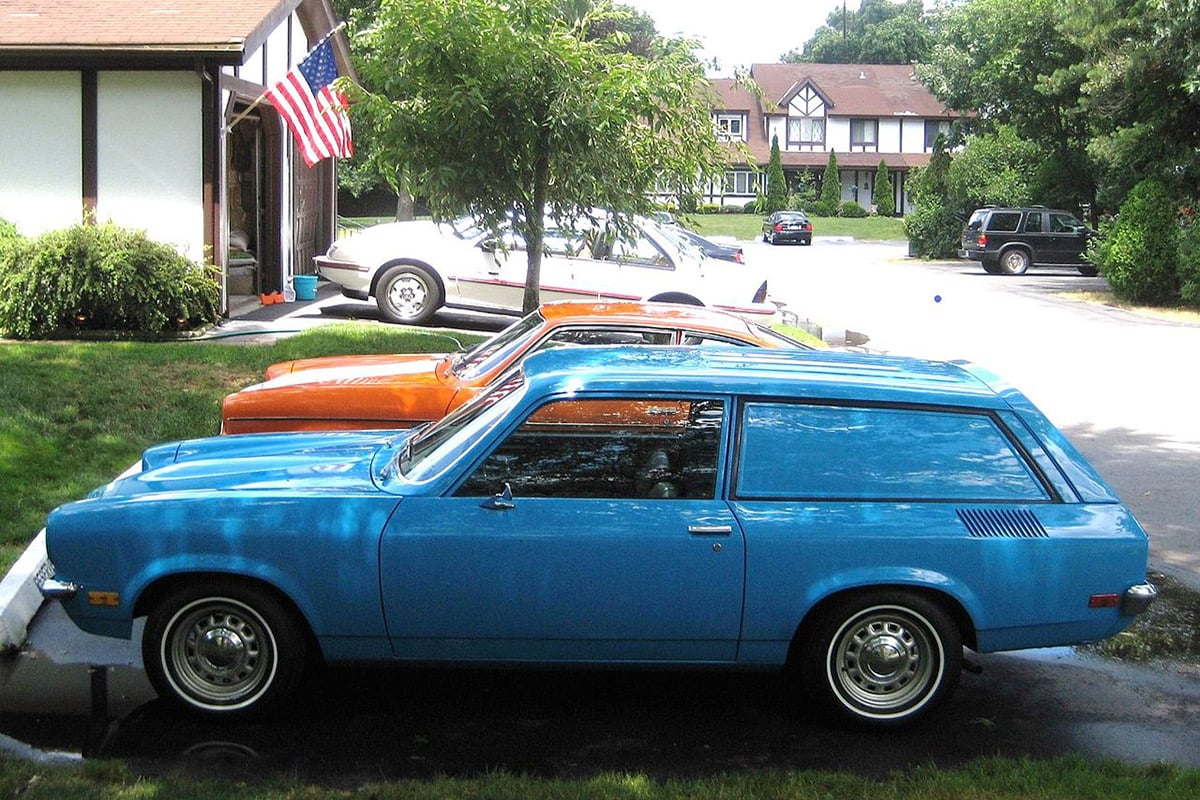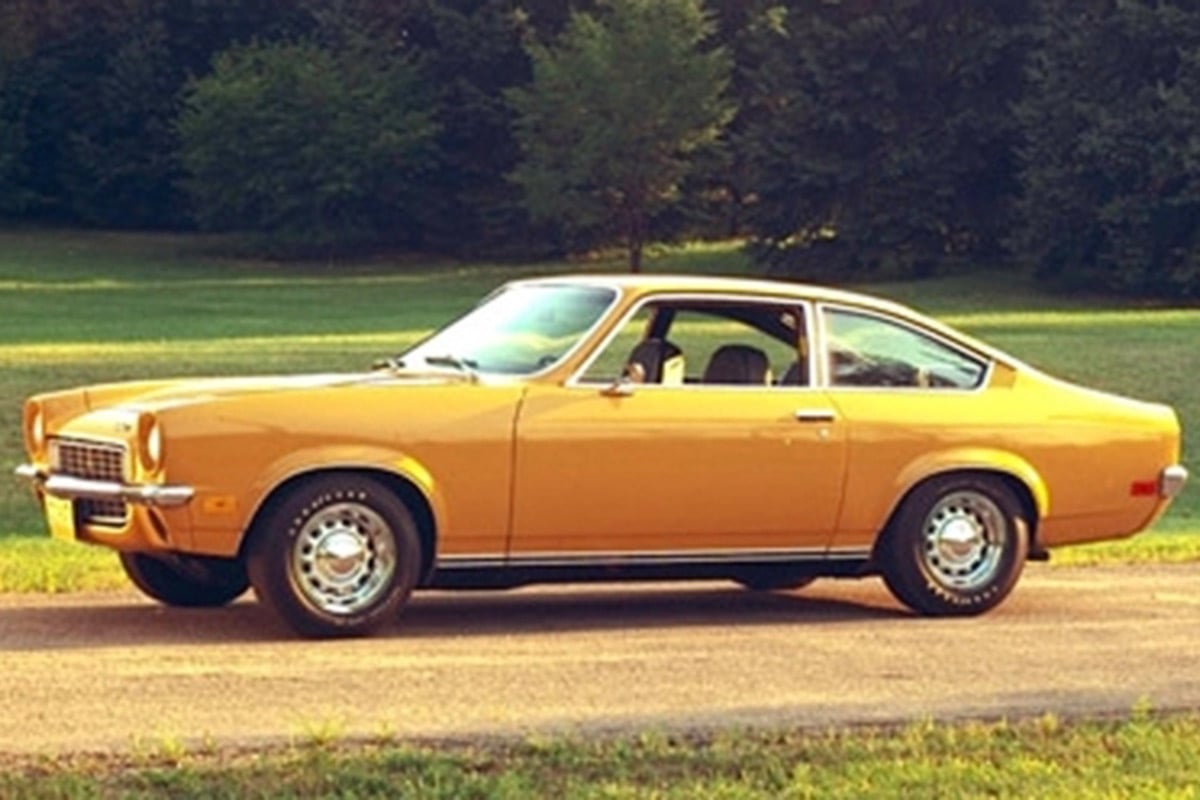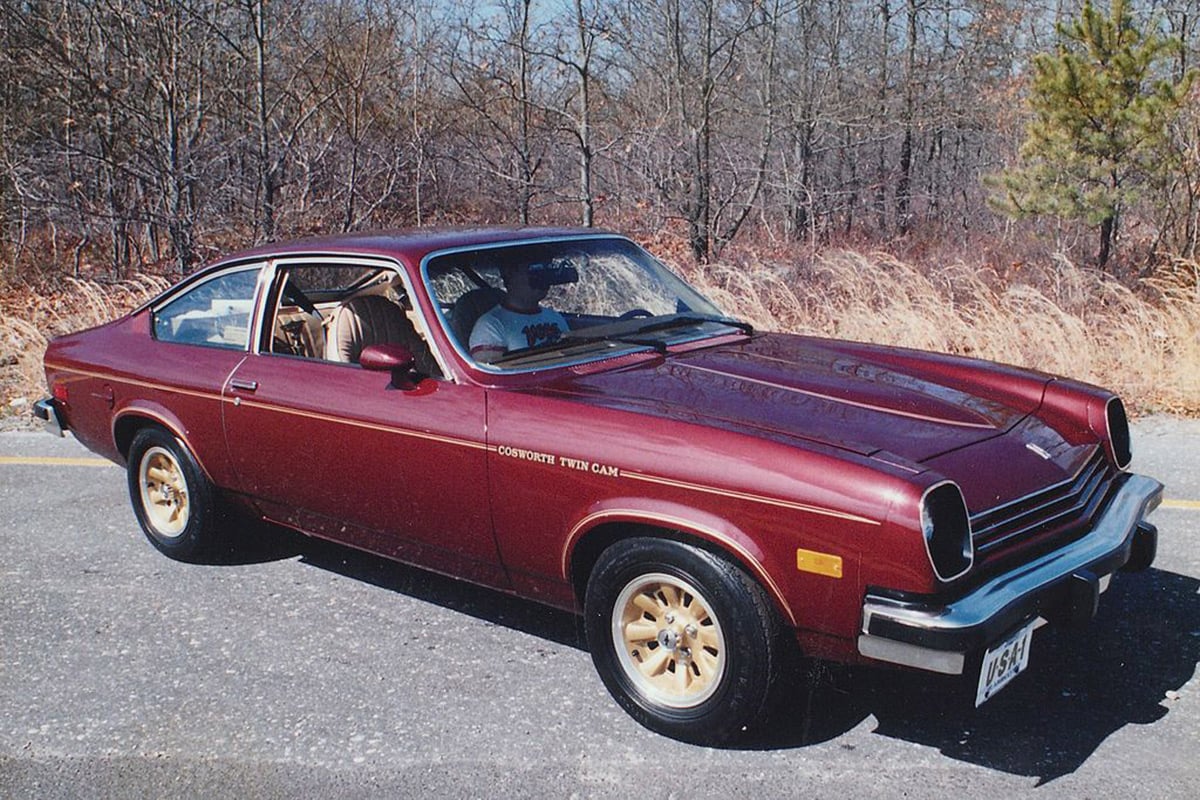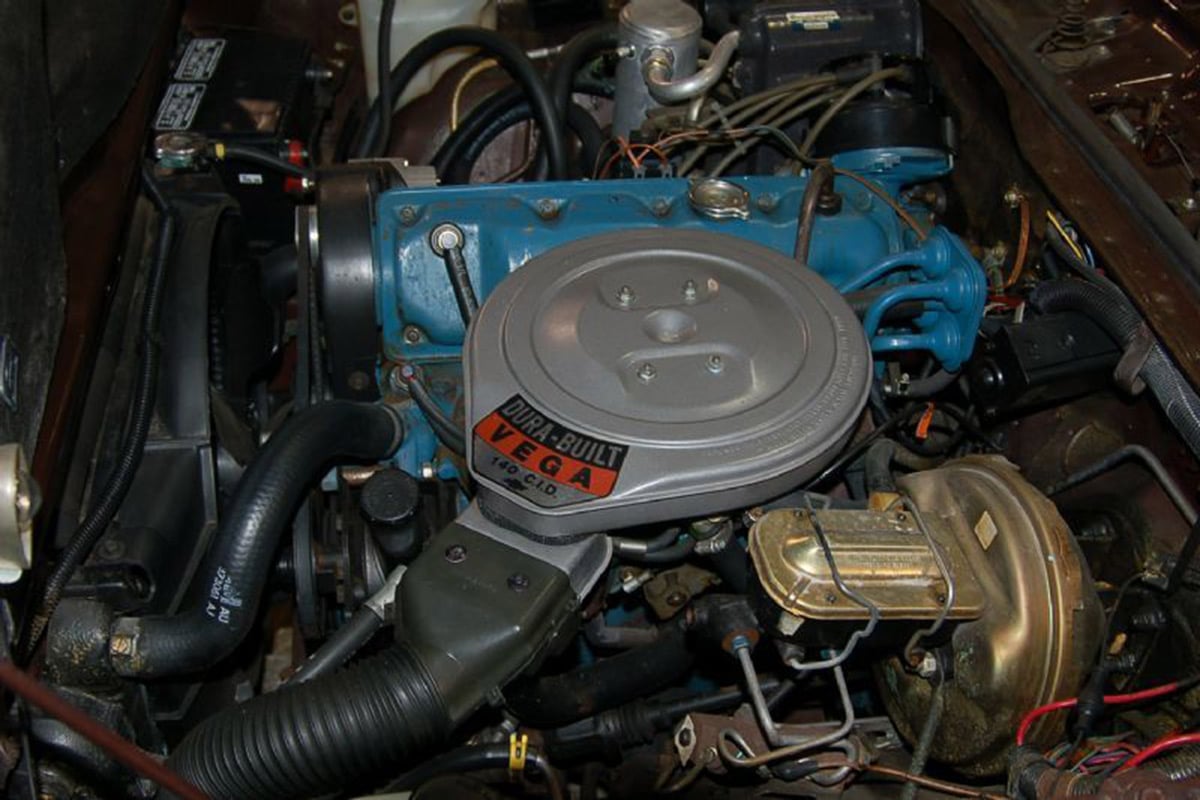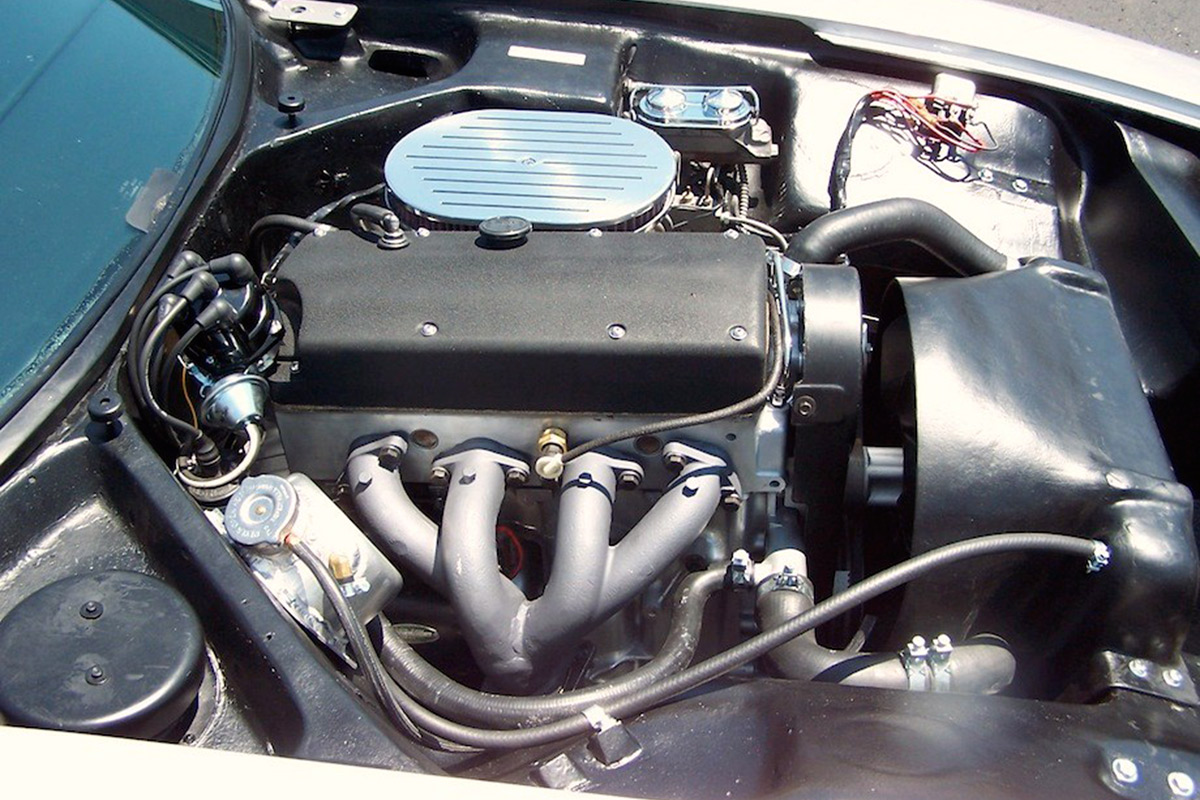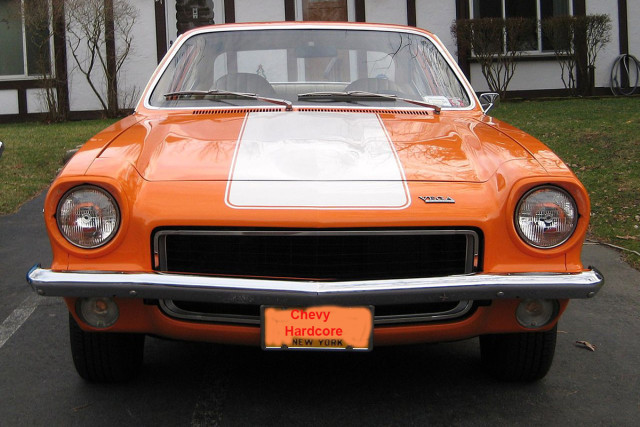
This ’73 Vega GT holds the distinction of being the millionth Vega made. Image via Wikimedia Commons.
Chevy’s Vega was supposed to be a star for the company. In fact, it was named after the brightest star in the constellation Lyra. But instead, it almost turned out to be a black hole for the company. The Vega was a subcompact produced from 1970-1977. From the factory,they were powered by an aluminum-block inline four cylinder. There was a performance version: the Cosworth Vega, in 1975 and 1976, but these were still only powered by the 122ci inline four. However, Cosworth did supply a dual overhead cam (DOHC) for the engine. Only 5,000 of these engines were built, and 3,508 Cosworth Vegas were built.
There Were Multiple Body Styles Available for Vega Buyers to Choose from
Three of the four body styles of the Vega: the panel delivery body, the hatchback, and the Cosworth. Images via Wikimedia Commons
Although every Vega came equipped with the 122-inline four, buyers had four different body styles to choose from. While the hatchback gave the Vega some cargo capacity, and the wagon allowed a family of four to comfortably take a vacation, most felt that the nothchback was just plain ugly. Finally, the panel-sided delivery body gave small businesses a viable and economical means of transporting small loads around town.
The Vega Received Awards and Praise at Introduction
Critics and reviewers sang the praises of the Vega when it was first introduced for the 1970 model year. Motor Trend even gave the Vega its prestigious “Car of the Year” award in 1971. Then Murphy raised his ugly head, and after the warm and fuzziness from all the awards wore off, the problems started cropping up.
The Vega had engineering problems. Reliability and safety concerns became a big issues with owners. The Vega also had a huge problem with rust. Eventually, the engine also started conveying the fact that it wasn’t up to snuff, as it developed durability problems. Even with a slew of design upgrades and recalls, GM’s image suffered badly. They’d already begun to receive a reputation of not being able to build quality, reliable cars, and the Vega only added to those woes.
GM considered the Vega a fuel mileage car, thus it received small engines from the factory, examples of which can be seen here. The engine bay is cavernous, making it easy for many to stuff a 327ci or 350ci engine in it. Images via Wikimedia Commons.
The Vega Was Fun to Drive
I had two friends “back in the day” who were Vega owners. One of them had a stock 1972, while the other had a 1973 with a 327 in it. While the V8 version was obviously quicker and more fun to drive, they both had excellent handling characteristics. They were fun to drive, whether the inline four was under the hood or it had a V8 in it.
Betcha Didn’t Know
One thing I didn’t know, is that in order to facilitate rail shipment, GM collaborated with Southern Pacific in the design of the Vert-A-Pac rail cars. While standard automotive rail cars could hold 18 vehicles, the Vert-A-Pac car could hold 30 Vegas in a nose down position.
Even though the cars were hauled in a nose-down position, engineers took this into account when designing the car, and the Vega was able to be shipped to dealers ready to go (with all fluids topped and ready). 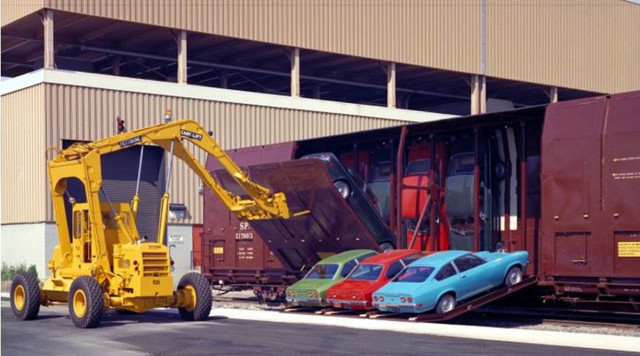 There were special cast-steel sockets on the underside of the car that locked the cars in position, and could be removed awhen they reached their final destination. In order to keep engine oil from running into the number one cylinder, the engine was built with special baffling. The battery was even specially-designed, as the filler caps were placed high on the rear edge of the battery to keep the acid from leaking out. Even the small windshield washer bottle was installed at a 45-degree slant to prevent spills.
There were special cast-steel sockets on the underside of the car that locked the cars in position, and could be removed awhen they reached their final destination. In order to keep engine oil from running into the number one cylinder, the engine was built with special baffling. The battery was even specially-designed, as the filler caps were placed high on the rear edge of the battery to keep the acid from leaking out. Even the small windshield washer bottle was installed at a 45-degree slant to prevent spills.



